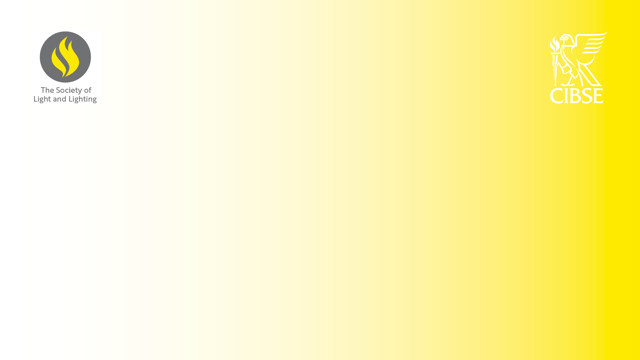
This Lighting Guide is intended as an introduction to the subject for lighting engineers and designers, specifiers, users and students alike. Because of this aim of making the guide suitable for a wide readership, it has been written as a reference document of experience, and has concentrated upon the practical applications of lighting in as many types of building as practically possible, and on giving proven solutions to practical problems.
The scope of this guide is concerned with electric lighting for the majority of types of places of worship found in most towns and cities. The list, however, is not exhaustive and reference should be made, in many cases, to the types of building and fabric rather than the religion itself. A place of worship is taken to be a building, or a particular room within a building, where people congregate to carry out prayer and activities relevant to their faith. Associated areas such as offices, vestries, boiler rooms and bell towers are also considered in this guide, to assist the designer in carrying out the design for the building in its entirety.
Lighting is concerned with the primary purpose of enabling people to see to perform tasks, whether they are prayer, reading or simply access. Lighting, as used in places of worship, has four objectives: to enable participants in the religious activity or ceremony to see what they are doing; to enable the congregation or assembly to see what is happening around them; to contribute to the safety of everyone within the room or building; and to create a good visual environment. With these objectives in mind, the several parts of this lighting guide have been compiled. Light is necessary for one to see, and as many gatherings take place at night as well as during the day, a system of artificial lighting is required to either replace or supplement the available daylight.
The places of worship for various religions differ considerably in both size and design, therefore the approach adopted here is to consider each religion or variant of that religion separately, where possible, appreciating the specific lighting problems posed by a particular religious activity or building layout. Some types of ancillary rooms, such as toilets, plant rooms and corridors, are repeated in each section to avoid the reader having to cross-reference around the guide. If you cannot find a mention of the religion which interests you in this guide then examining the discussion of an analogous room or building will often be worthwhile.
The guide also includes up-to-date legislation where relevant and incorporates best practice principles throughout. Individual characteristics have been aligned to BS EN 12464-1: 2011 where possible, including the introduction of a distinction between task area and surrounding areas, and the subsequent recommendation of uniformity for those areas. Indeed, uniformity has been given far more importance throughout the guide, with recommended minimum values in the tables appertaining to each particular application.
Note: Amendments were made to the PDF version of LG13 in October 2013. The addenda are available on request to purchasers of the print version - please contact [email protected]. Amendments were made to the following pages: 6, 7, 12, 18, 19, 22, 25, 29, 31, 37, 43, 51, 63, 70, 77, 82, 89, 94, 110, 113, 115, 117, 118, 125, 128, 130, 131, 136, 137, 138, 141, 147, 158, 162, 163, and 164.
Contents:
1 Introduction
2 Lighting considerations
2.1 The illuminance of the task
2.2 The plane of the task
2.3 Illuminance uniformity
2.4 Modelling
2.5 Obstruction
2.6 Lighting of the general surround
2.7 Surface reflectances
2.8 Direct glare
2.9 Indirect glare
2.10 Colour properties
2.11 Stroboscopic effects
2.12 Environmental conditions
2.13 Maintenance
2.14 Energy consumption
2.15 Emergency lighting
2.16 Daylight
2.17 Listed buildings
2.18 People with disabilities
3 Interior lighting
3.1 Introduction
3.2 Anglican and Catholic churches
3.3 Mosques
3.4 Synagogues
3.5 Methodist churches
3.6 Salvation Army citadels
3.7 Mormon Chapels and temples
3.8 Kingdom Halls of Jehovah’s Witnesses
3.9 Christadelphian ecclesias
3.10 Christian Science churches
3.11 Quaker meeting houses
3.12 Pentecostal and Evangelist halls
3.13 Buddhist, Hindu and Sikh temples
3.14 Monasteries and convents
3.15 Non-religious venues and buildings
3.15a Masonic halls
3.15b Chapels
3.15c Prayer rooms
4 Emergency lighting
4.1 Introduction
4.2 Escape lighting
4.3 Standby lighting
5 Exterior lighting
5.1 Introduction
5.2 Car parking
5.3 Security lighting
5.4 Floodlighting
5.5 CCTV surveillance
5.6 Obtrusive light
6 Equipment
6.1 Light sources
6.2 Luminaires
6.3 Control systems
6.4 Maintenance of lighting equipment
7 Lighting design
7.1 Introduction
7.2 Objectives
7.3 Specification
7.4 General planning
7.5 Detailed planning
Appendix 1 Light source colour
Appendix 2 Field measurements of illuminances
Acknowledgements
Author: David Holmes (Hilclare Ltd)
Technical Editor: Peter Boyce